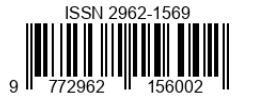Gambaran Nilai Hematokrit Pada Pasien Demam Berdarah Dengue Di Rsud 45 Kuningan
DOI:
https://doi.org/10.57214/jusika.v5i2.507Keywords:
dengue hemorrhagic fever, hematocrit value, Aedes aegypti mosquitoAbstract
Dengue Hemorrhagic Fever is still one of the disease problems in Indonesia today. The first case of DHF in Indonesia itself occurred in 1986 in the city of Surabaya, this disease continues to increase and spread throughout Indonesia, which causes all parts of Indonesia to be at risk of being infected with this disease. Dengue fever or dengue fever is an infectious disease caused by the dengue virus and is transmitted through the bite of Aedes aegypti and Aedes albopictus mosquitoes. This disease is one type of health disorder that interferes with
everyone's productivity and is one of the infectious diseases that often causes outbreaks and causes death. This study aims to determine the hematocrit value in dengue hemorrhagic fever patients and what percentage of the hematocrit value in dengue hemorrhagic fever patients is in accordance with the normal value standard with descriptive research methods and examination methods using a hematology analyzer. For data analysis using the SPSS program, the K Independent Samples Test with a sig value of 0.000 was carried out on 33 blood samples obtained from dengue hemorrhagic fever patients in a regional hospital 45 kunngan purposively. The results showed that there were differences in the hematocrit value in patients with dengue hemorrhagic fever. The results of the examination of the hematocrit value of dengue hemorrhagic fever patients showed an increase in the hematocrit value of 12 people with a percentage of 36.40%, a decrease of 6 people with a percentage result of 18.20% and for normal numbers as many as 15 people with a percentage result of 45.50 %
References
Arief Hidayat, Rismawati Yaswir, A. W. M. Hubungan Jumlah Trombosit dengan Nilai Hematokrit pada Penderita Demam Berdarah Dengue dengan Manifestasi Perdarahan Spontan di RSUP Dr. M. Djamil Padang. 6, 2 (2017).
Bhatt, dkk. (2013). Global Distribusi dan Beban Demam Berdarah. National Library of Medicine : National Center for biotechnology Information. 496, (7446) 504 – 507. https://www.nature.com/articles/natu re12060
Brady, dkk.(2012). Menyempurnakan Batas Spasial Global Penularan Virus Dengue Konsensus Berbasis Bukti. Plos Neglected Tropical Deiseases, 6 (8), https://journals.plos.org/plosntds/arti cle?id=10.1371/journal.pntd.000176 0
Caesar, E., Rezeki, I. N., & Sibuea, S. (2023). Penatalaksanaan Holistik Demam Berdarah Dengue Grade 1 pada Anak Usia 2 Tahun Melalui Pendekatan Kedokteran Keluarga di Wilayah Puskesmas Gedong Air. Majority, 11(2), 139-147.
Desmawati. (2013). Sistem Hematologi & Imunologi.Jakarta : Penerbit IN MEDIA
Ernawati., Bratajaya, C. N., & Martina, S. E. (2018). Gambaran Prakter Pencegahan Demam Berdarah Dengue (DBD) di Wilayah Endemik DBD. Jurnal Ilmiah Indonesia, 9 (1), 17 – 24.https://ejournal.umm.ac.id/index.p hp/keperawatan/article/download/51 96/5171
Guzman, MG dan Harri, E. (2015) Sistem Pakar Berorientasi pada Deteksi Influenza dan Demam Berdarah yang di Kembangkan di Platform Seluler. Junal Rekayasa Lunak dan Aplikasi.8 (6),https://www.sciencedirect.com/sc ience/article/pii/S0140673614695729 .
Kafrawi, V. U., Dewi, N. P., & Adelin, P. (2019). Gambaran Jumlah Trombosit dan Kadar Hematokrit Pasien Demam Berdarah Dengue di Rumah Sakit Islam Siti Rahmah Padang. Health and Medical Journal, 1(1), 38-44.
Kafrawi., Ulhaq, V., Purnama, N., Prima., Adelin. (2019). Gambaran Jumlah Trombosit Dan Kadar Hematokrit Pasien demam Berdarah Dengue Di Rumah sakit Islam Siti Rahmah Padang.
Kementrian Republik Indonesia. (2016). Situasi Penyakit Demam Berdarah di Indonesia. Pusat Data dan Infomasi (InfoDATIN).
Kementrian Republik Indonesia. (2018). Situasi Demam Berdarah di Indonesia. Pusat Data dan Informasi (InfoDATIN).
Notoatmodjo. (2012). Metodologi Penelitian Kesehatan. Jakarta : Rineka Cipta
Notoatmodjo. (2018). Metodologi Penelitian Kesehatan. Jakarta : Rineka Cipta
Nugraha, G. (2015). Panduan Pemeriksaan Laboratorium Hematologi Dasar. Jakarta Timur : Cv. Trans Info Media
Patandianan, R., Mantik, M. F. J., Manoppo, F. & Mongan, A. E. ( ).Hubungan Kadar Hemoglobin Dengan Jumlah Trombosit Pada Pasien Demam Berdarah Dengue
Pusparini. (2004). Kadar Hematokrit Dan Trombosit Sebagai Indikato Dan Sekunder. Jurnal Kedokteran Trisakti. 23(2): 51-6.
Rena, N, M, R., Utama, S., Parwati, T.,(2009) Kelainan Hematologi Pada Demam Berdarah Dengue. J Peny Dalam, 10 (3).
Salamah, Q. N., Adnan, N., & Adi, S. (2023). Gejala Klinis dan Karakteristik Laboratorium Pasien Demam Berdarah Dengue (DBD) Pada Anak-anak dan Dewasa di Provinsi DKI Jakarta. Jurnal Kesmas (Kesehatan Masyarakat) Khatulistiwa, 10(3), 166-178.
Siswo, D. S., & Adimayanti, E. (2023). Pengelolaan Resiko Perdarahan Pada Anak Usia sekolah Dengan Demam Berdarah Dengue (DBD). Jurnal Keperawatan Berbudaya Sehat, 1(2), 61-67.
Sugiyono, (2020). Metode Penelitian Kuantitatif, Kualitatif, Dan R&D. Bandung : Alfabeta
Widoyono. (2011). Penyakit Tropis : Epidemiologi, Penularan, Pencegahan & Pemberantasannya. Jakarta : Penerbit Erlangga.








